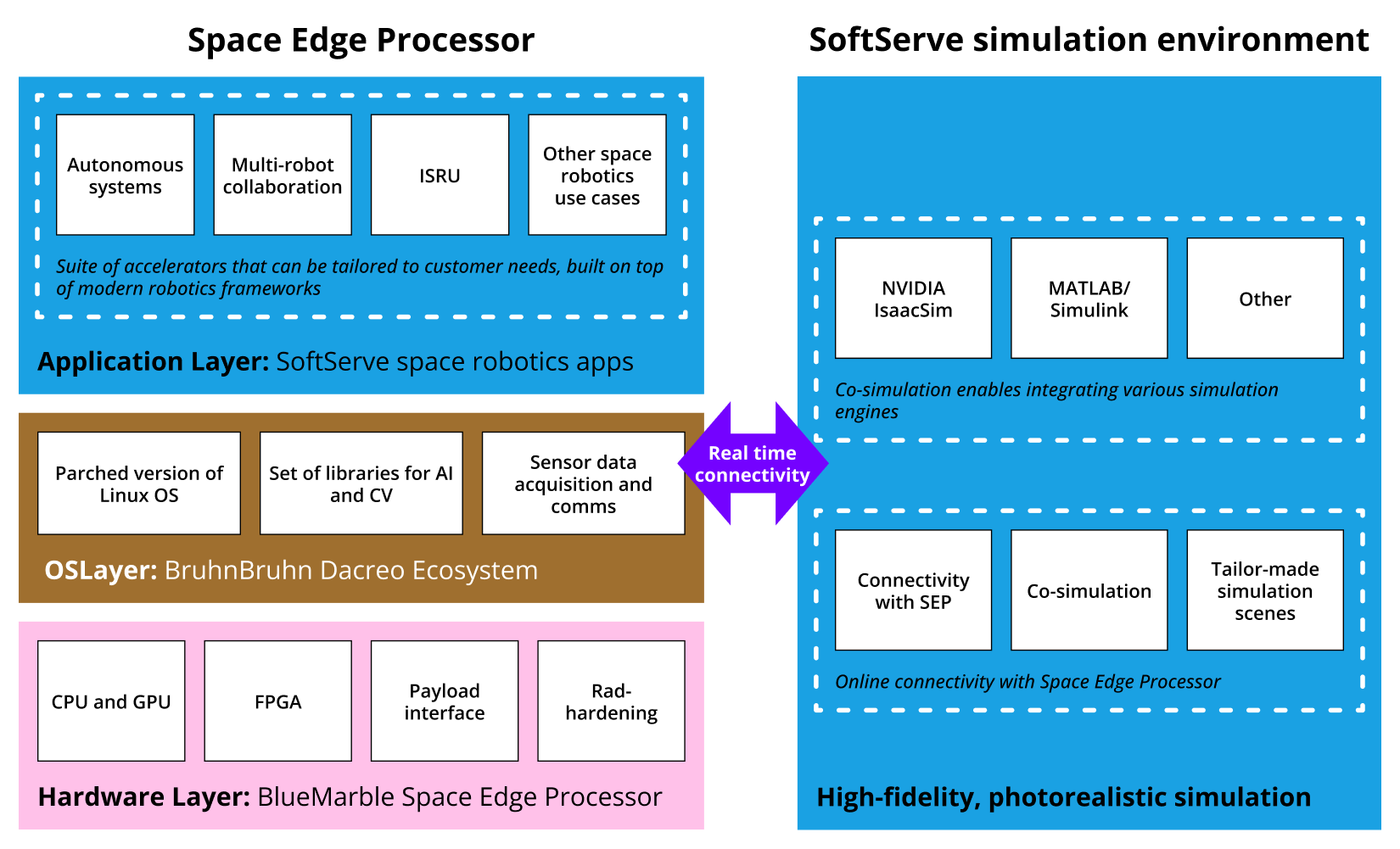Accelerating Towards the New Frontier, Simulation-First
The space economy is poised for unprecedented growth, anticipating a surge to $1.8 trillion by 2035. With the race to secure lucrative contracts intensifying, the focus is shifting towards faster prototyping at reduced costs and minimized risks. The challenge lies in moving past outdated hardware and software strategies to allocate resources efficiently, optimize their utilization, and mitigate risks.
The challenge of rapid prototyping in space exploration
The pressure to innovate quickly and efficiently is more pronounced than ever in the space economy. Yet even a small weather satellite, for instance, can cost around $250 million, while military-grade satellites may start at $100 million more. With a two-year development time even for small satellites, the barriers to rapid advancement are high.
Learn more about our simulation-first robotics approachThe problem lies with the limitations of traditional hardware and software development strategies:
- Traditional radiation-hardened boards, despite their longstanding use, have limited flexibility, higher costs, and prolonged development timelines due to specialized architectures.
- The dependency on real-time operating systems, coupled with limited ecosystem support, complicates the prototyping process, often leading to increased expenses and extended development times.
Harnessing modern hardware for simulation-first testing
To address these challenges, SoftServe has pioneered a new approach that combines simulations and space robotics accelerators. By integrating radiation-hardened x86 compatible-edge hardware from Blue Marble Communications and BruhnBruhn Innovation's dacreo software stack, this approach bridges the gap between early prototypes and space-ready applications.
The integration not only facilitates the reuse of terrestrial software components for space use cases but also overcomes the low support for software ecosystems that are widely used in terrestrial robotics.

SoftServe’s space robotics apps operate on Space Edge Processor-compatible hardware. The simulation environment links to the hardware, accelerating development and allowing hardware-in-the-loop testing.
The solution consists of three basic components:
- SoftServe's simulation-first methodology leverages COTS simulation environments such as NVIDIA Isaac Sim. This enables continuous software verification in a fully-fledged testing environment for space-ready applications.
- Blue Marble Communications' Space Edge Processor (SEP) deploys mainstream architectures such as x86 for enhanced computational capabilities and space-ready implementation.
- BruhnBruhn's dacreo AI ecosystem, which can be deployed on the SEP, provides a platform that supports Dockerized ROCm software stacks for high-performance computing and high-fidelity simulations.
Taken together, real-time connections to simulation engines allow for on-demand testing and performance benchmarking, thereby reducing overall project risk.
The journey towards a more efficient space economy
SoftServe's innovative approach has already yielded tangible results. Solutions like the Lunar Drone Accelerator or Lunar Robotic Excavator demonstrate the SEP's compatibility with Linux and desktop processor architectures. The unified approach offers a range of benefits that redefine space robotics development:
- Accelerated Time-to-Market: By developing initial prototypes on flight-ready hardware, developers no longer need to start with more accessible technologies like Robot Operating System (ROS) or SpaceROS and later convert for space mission use.
- Simplified Testing and Verification: The high-fidelity simulation environment developed by SoftServe provides seamless end-to-end testing. This makes the verification process more straightforward, enhancing the reliability and robustness of space-ready applications.
- Easy Software Adoption: The Linux environment, coupled with software accelerators, simplifies the adoption of widely used robotics and AI frameworks. This compatibility ensures that developers can seamlessly transition from terrestrial to space applications, reducing development complexities.
- Lower Bandwidth Requirements: The onboard computational capabilities of the SEP mitigate the need for downlinking data to Earth for processing. This reduces bandwidth requirements, streamlining the data flow and improving overall efficiency.
Collaboration for a new era in space exploration
The space economy is on the brink of transformation, driven by the need for faster, more efficient, and cost-effective robotics solutions. SoftServe's simulation-first approach, in collaboration with Blue Marble Communications and BruhnBruhn Innovation, offers a solution that addresses the challenges of traditional space robotics development. By combining cutting-edge hardware, advanced software ecosystems, and simulation-first methodologies, this approach delivers significant advantages — from accelerated time-to-market to advanced AI capabilities.
If you would like to learn more about our approach, read our white paper with detailed insights into our hardware and software stack. In addition, explore a test case evaluating computer vision algorithms on a test unit of the SEP using NASA’s POLAR Stereo dataset and photorealistic simulation developed in NVIDIA Isaac Sim.
And if you want to chat about how we can help you with your next space tech project, let’s talk.

